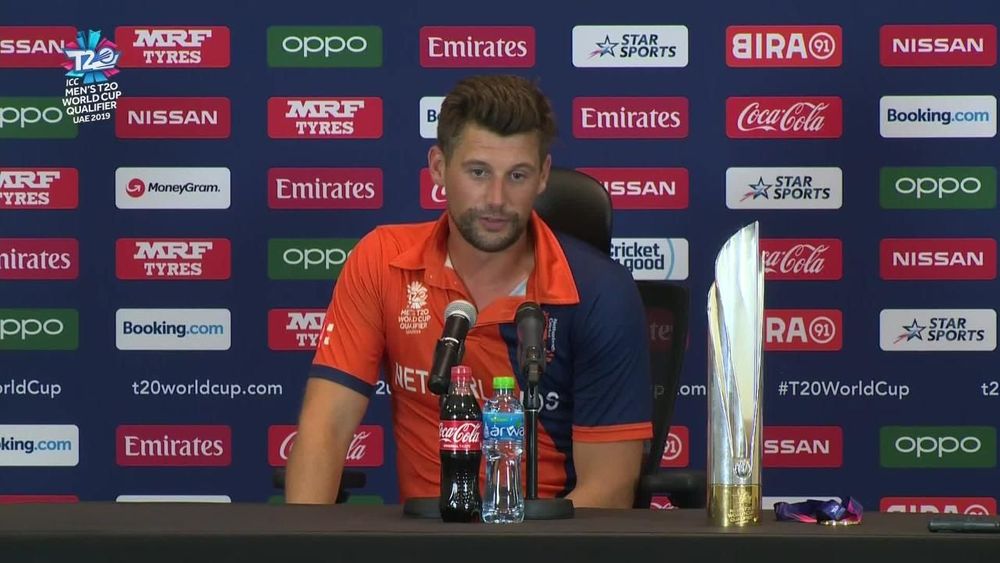
Back in 2013 I had a lively argument with Tim Anderson, who was at the time the ICC’s Global Development Manager.
He was visiting the Netherlands, where I was vice-chairman of the governing body for cricket, the KNCB.
The argument was about Anderson’s assertion that the time had come for the Associates and Affiliates to become less dependent on ICC funding and raise what they needed from local sources, be it through government grants or increased sponsorship.
My response to this was that it was as unreasonable as it was impractical: few Associate or Affiliate members were in a position to do this, especially as long as cricket was not an Olympic sport, and the opportunities to find sponsorship were already being diminished by the shift in ICC policy, which meant that some countries were barred from taking part in official tournaments.
But Anderson was adamant: the ICC was going to cut back on its funding of the emerging countries, and they would have to find a way of taking up the slack.

This was, of course, several months before the Gang of Three – BCCI chairman N Srinivasan, the ECB’s Giles Clark, and Cricket Australia’s Wally Edwards – launched their putsch, which resulted in a reduction of Associates and development funding from $US 672m. to $US 210m., and a massive increase for the three initiating countries, the BCCI’s share leaping from $US 97m. to $US 570m.
That disgraceful situation only lasted three years, but the damage to the Associates has never been reversed: according to the funding model adopted in June 2017, with a third of what should have been their share top-sliced to fund the new ‘Full members’ Afghanistan and Ireland, the 93 Associates only received a total of $US 160m. between them.
What applied to the funding went equally for opportunities on the field. Between its establishment in 2007 and the high water mark of 2012, the World Cricket League saw 44 Associate and Affiliate countries test their mettle against opponents from all over the planet, and tournaments were hosted in places as diverse as Guernsey, Botswana and Samoa.
Below the WCL there was an articulated system of regional tournaments, and the ICC’s proud boast was that every member-country had a ‘pathway’ to the 50-over World Cup, ‘the Cup that Counts’.
Then, suddenly, it didn’t count any more, or at least not for those outside the magic circle of the ‘competitive’.
Worse, it was no longer a requirement that members take part in ICC tournaments; instead, countries had to meet certain standards, in recruitment and development for example, to be allowed to take part, even at the regional level.
And with the subsequent collapse of the regional tournament structure, this means that there are ICC members, such as Hungary, Russia, Romania and Serbia, who have never had the opportunity to take part in an official ICC competition.
There were, of course, cases where Affiliate members, as many then were, were doing nothing to promote the game and where ICC tournaments were treated as a holiday jolly for a bunch of ever-ageing expats, and equally a few who stated that they would prefer to spend whatever funding they received on development rather than on travelling to tournaments.
But those were local problems which needed to be addressed locally with ICC support, while the cut-backs in the tournament system were really part of that ‘melancholy, long withdrawing roar’ (to quote Matthew Arnold) which has been the progressive defunding of Associates cricket over the past seven years.
The ICC can point to its opening up of T20 International status to any match between teams representing two of its member countries, and to the tripartite set-up of Super League, World Cup League 2 and Challenge League, which give 20 Associate countries a theoretical pathway to a spot in the 10-team 50-over World Cup.
As long as the World Cup is so restricted, however, that pathway is more of an impenetrable thicket, while bilateral series of T20Is are open to precisely the same charge of lack of context which has caused so much grief in the discussion about the future of Test cricket and led to the establishment of the World Test Championship.
This is, of course, all now threatened by the shutdown which has been brought by the covid-19 pandemic, but this time without cricket is an opportunity to consider what the international game should look like once the planes are again flying and sport is again on our television and laptop screens.
The answer is, I am convinced, very different from that which existed six months ago.
It all comes back to that conversation with Tim Anderson, and the allocation of ICC funding.
The ICC’s guiding principle, that those who are responsible for the ICC’s ability to sell its rights so profitably, and who are also able to generate the greatest income domestically, are entitled to the lion’s share of the spoils regardless of what they or anyone else needs, is fundamentally opposed to the global development of the game.
We read last week that the new treasurer of the BCCI, Arun Dhumal, wants the BCCI to be a ‘big brother’ to other cricket countries as the world comes out of the lockdown.
If we ignore the unfortunate Orwellian echoes of that remark, and give Mr Dhumal the benefit of any doubt about whether the other cricket countries he had in mind were the other Full Members, there are some practical things that he and his Board might propose to redress the balance.
Let us suppose, for instance, that India’s massive share of the ICC loot were to be reduced by 5 per cent, and that of eight other Test countries were to be cut by 2 per cent.
That would make available more than $30m. to be distributed among the Associates, an increase of 18.75 per cent in their funding under the current model.
Would that be enough? No. But it would be a start, and it would be a signal that the ICC is willing to bring the banditry of the past decade to an end.
And it would buy time to develop a new deal for cricket, one which applies the much-vaunted Spirit of the Game to the spirit of its governance as well.
That is a matter to which we will return.
Keep up with the emerging game and the progress of Associate members and development through our Facebook and Twitter pages.
Looking for audio content on the emerging game? Add the Emerging Cricket Podcast to your favourites on Apple, Spotify and Podbean.
Want extra Emerging Cricket content? Contribute to the Emerging Cricket Patreon cause from as little as $2 a month. Sign up here!






